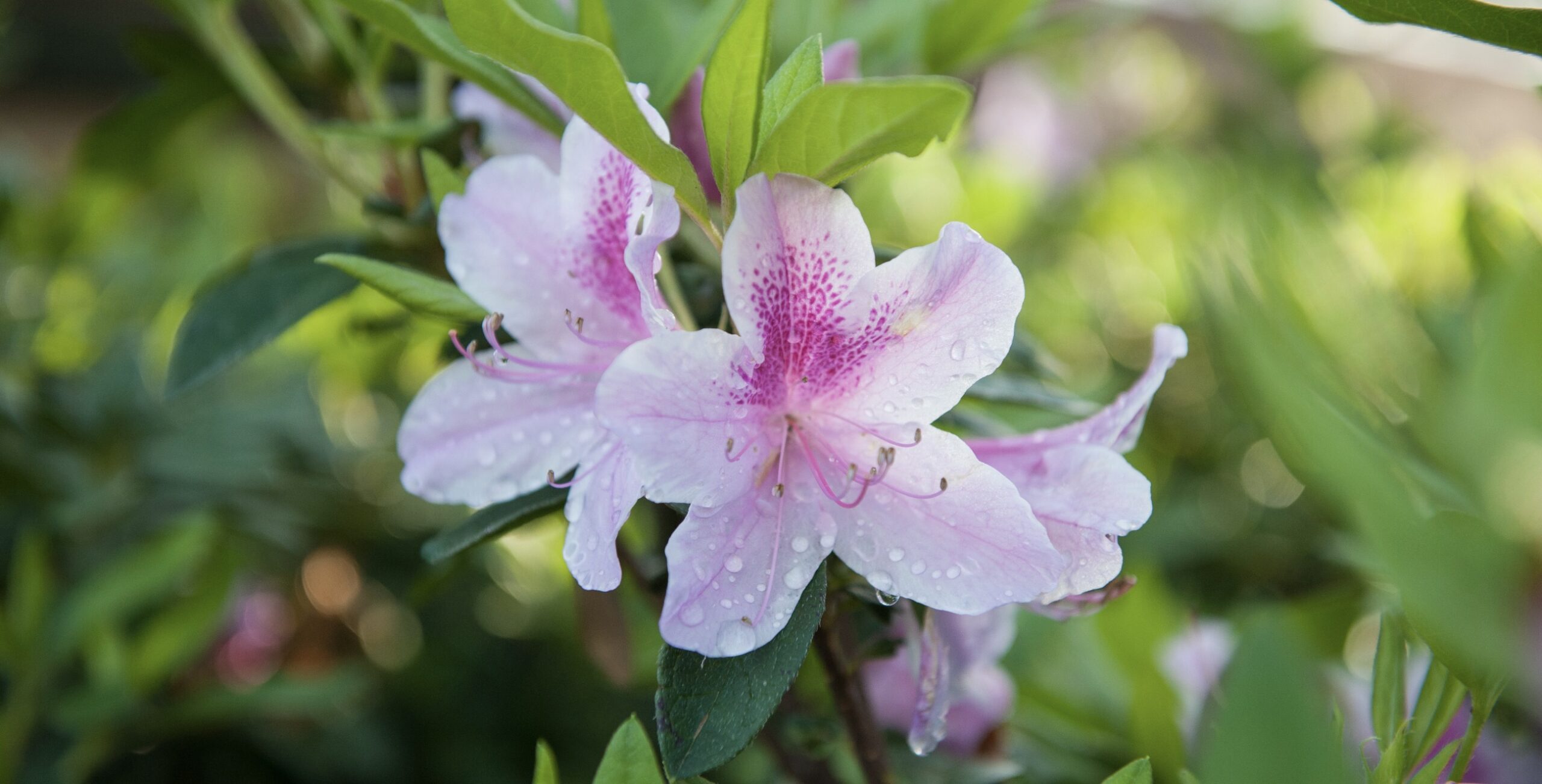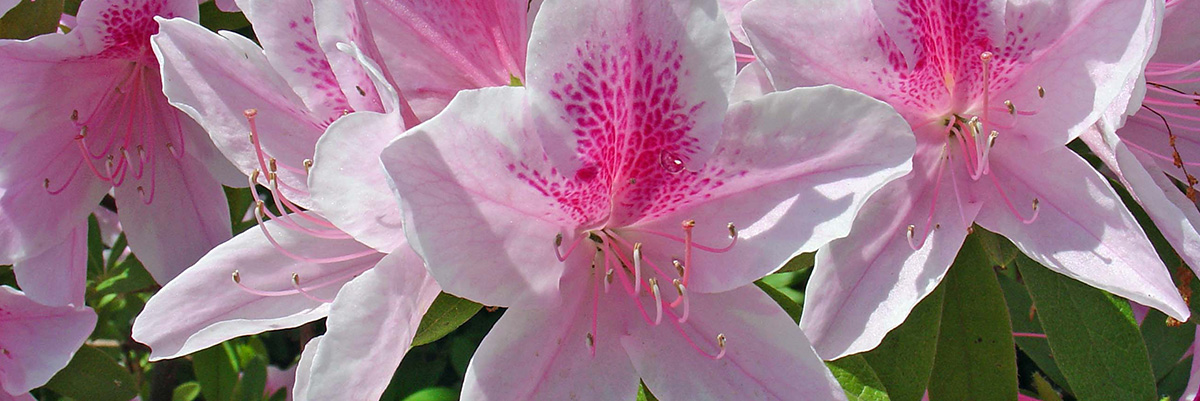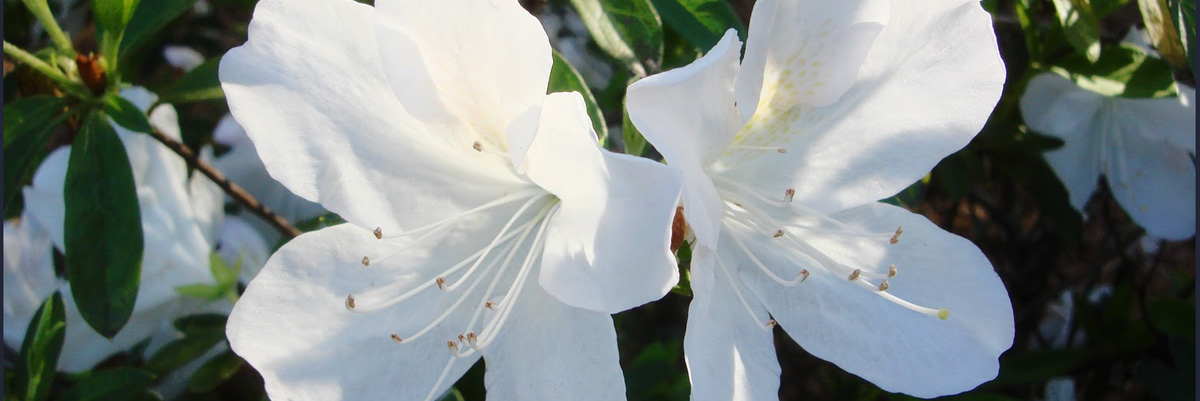
I’m a native son of Tallahassee, born and raised. For me, and so many others from this area, springtime means azaleas. Massive Indica Azalea hedges are such an integral part of the Tallahassee landscape. However, sometimes we forget they’re even there until the spring explosion of color reaches a crescendo. I’m ashamed to say, I’m now able to drive through a neighborhood full of blooming evergreen azaleas and not even slow down to admire the show. It would seem this most successful element of our city’s gardens has become ingrained in my eye as commonplace. I’ve begun to take its presence for granted, and I bet you have, too. I think we could all benefit from slowing down our busy lives for just a moment to take a fresh look at these hard working plants that bring so much joy each spring.

I have countless fond memories with azaleas. I can’t tell you how many forts I built in overgrown azalea bushes as a child. I played with bumblebees visiting Formosa blooms in the front yard. I first learned how to properly prune a shrub as I watched how azaleas grow after trimming. And that knowledge snowballed into an 8 year run as an independent landscaper! If you’ve spent more than a few years in Tallahassee I know you too have fond memories of springtime, and I know azaleas were in the background.
Indica Azaleas can be so prevalent in parts of town, many people think they are native or perhaps spread from area to area on their own. While not native to our continent, these plants are very well-behaved and non-invasive. If you see Azalea Indicas, no matter how big and natural they look, those plants were intentionally placed in the ground. I say all this to bring it home, if we don’t keep planting Azaleas, eventually Tallahassee’s spring will be without these iconic flowers. In fact, Azaleas are so critical to our town, the date of the Springtime Tallahassee Parade is even scheduled to coincide with, what used to be, the usual timing of peak azalea blooms!

Indica Azaleas are the perfect choice to form the frame of your garden. What more can you ask for than affordable, low maintenance, and easy to care for? And remember, each spring display of azalea blooms isn’t “just another azalea”, it’s a common theme that runs through our town’s locales and history. Azaleas unite and beautify our city, giving it character and a true sense of place that I’ve been lucky enough to experience my whole life. I vow right now to never again take this gorgeous event of spring for granted. Next time you are driving through your neighborhood, roll down your window, let in the warm spring air, and keep an eye out for any azaleas in bloom. You can bet I’ll have my eyes peeled the entire drive home this afternoon, for those lovely glints of purple and pink that remind me, I am home.
———————————-
While there are many types of azaleas, the category you’ll see shining brightest all over Tallahassee in spring is the Azalea Indica. Indica Azaleas are medium to large growing, evergreen, and bloom each spring in colors from white, through shades of pink, and into dark purple. The big three varieties around Tallahassee are purple Formosa, white G.G. Gerbing , and pink George Tabor.
The Many Commendable Attributes of the Azalea Indicas
- Easy care. Very rarely touched by disease or pests.
- Low Maintenance. Trimming need only be done once a year for full clean plants.
- Drought Tolerant. Once established just rainfall can keep these beauties going for decades.
- Great Value. The most affordably priced plants to form the background of your landscape.
- Beautiful. Spring blooms turn green shrubs into masses of bright color each year.
- Long Lived. Azalea Indicas thrive for decades. Many around Tallahassee are over 50 years old
- Versatile. These azaleas can grow in full sun or shade and almost any soil type.
Watering
Apply at least 1 gallon of water slowly and directly to the root ball every 2 days for the first Spring and Summer. Apply at least 1 gallon of water slowly and directly to the root ball every 4 days for the first Fall and Winter. Only rain over ¼ inch counts as a watering. The second year watering needs will reduce, water when leaves first show signs of wilting
*This article was written by Jonathan Burns (Tallahassee Nurseries Outdoor Manager, FNGLA Florida Certified Horticulture Professional)

